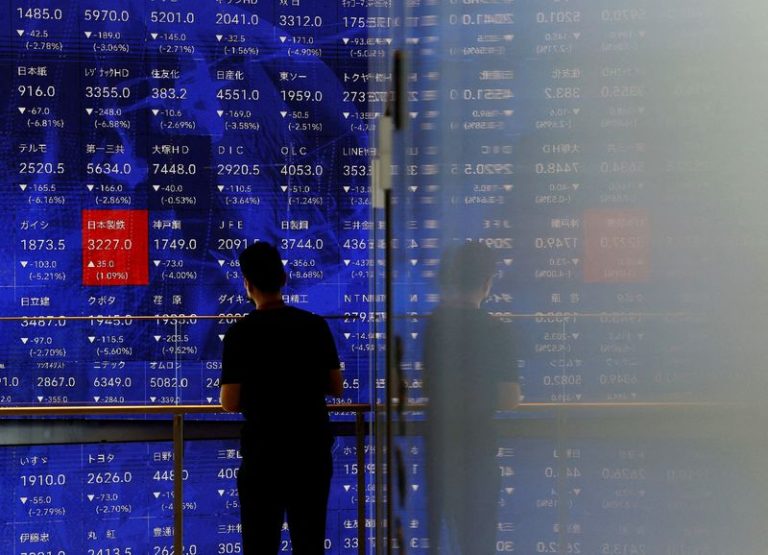By Jamie McGeever
(Reuters) – A look at the day ahead in Asian markets.
Investors in Asia are off to a flying start to the new trading month, optimistic about a « soft landing » from the US and a dovish outlook from the Fed, which should help boost risk appetite and the appeal of emerging market assets.
The recent fall in the dollar, lower US bond yields and the rebound in global equities have led to a significant easing of financial conditions that is fuelling a virtuous circle of increasing price increases.
Data last week showed that U.S. growth beat expectations and inflation slowed as the Fed prepares to begin its monetary easing cycle later this month. Add to that a strong second-quarter earnings season, and a “Goldilocks” scenario is clearly emerging.
But as always, the danger in times like this is to rest on one’s laurels: episodes like the August 5 volatility shock are always present, and next time, the impact may not be so fleeting. And then there’s China.
Official data from China’s purchasing managers’ index (PMI) released Saturday provided a first glimpse of how the world’s second-largest economy performed in August, and made for a sobering reading: industrial activity is weakening, deflationary pressures are building and the need for stimulus is growing.
Manufacturing activity hit a six-month low, down for the fourth straight month, as factory gate prices fell and owners struggled to secure orders. Services activity has picked up, but growth in the sector is barely visible.
In fact, the composite PMI index slipped to 50.1, the lowest level since December 2022, when China’s economy reopened, signaling near-zero growth.
China’s “unofficial” manufacturing PMI will be released on Monday. The Caixin PMI is expected to rise to 50.0 from 49.8, meaning it will move from a slight contraction to “zero growth.” Manufacturing PMIs from across Asia, including Japan, India, Australia and South Korea, will also be released.
Traders will also be closely watching the yuan, which is at its strongest level against the U.S. dollar in 15 months amid growing corporate demand for the currency and with U.S. rate cuts on the horizon.
Overall liquidity and market activity will be lighter than usual, with US markets closed on Monday for Labor Day, but the backdrop remains generally constructive.
According to Goldman Sachs indices, financial conditions in emerging markets are the most relaxed in more than a year, conditions in the United States are the most relaxed in more than two years and global conditions are the most relaxed in nearly two and a half years.
The yield on the 10-year U.S. Treasury fell 20 basis points in August, the fourth consecutive month of declines.
The S&P 500 rose for a fourth straight month, returning to near July’s record high, the MSCI World index hit a new high, while the MSCI Asia ex-Japan index rose for a sixth month in the past seven months.
Here are the main developments that could give Asian markets a better direction on Monday:
– Manufacturing PMIs from China, Japan and other countries (August)
– Inflation in Indonesia (August)
– Australian corporate profits (Q2)
(Reporting by Jamie McGeever, editing by Diane Craft)



